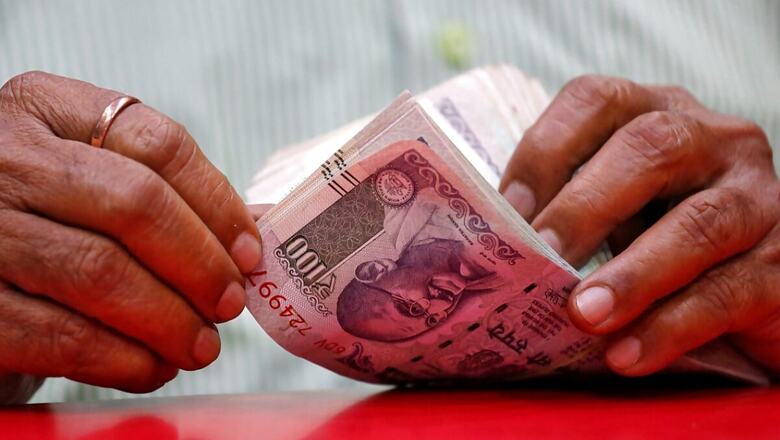
views
Rating agency ICRA on Wednesday revised down its credit growth outlook for banks to 2-3 per cent for the current fiscal, and said the coronavirus pandemic-driven stress may leave 3.1-3.7 per cent of assets into bad loan list by March. Earlier, it had forecast credit growth for banks at 6-7 per cent.
The agency also expects GDP to contract by 11 per cent this fiscal from its earlier forecast of 9.5 per cent, as there is no let-up in the pandemic nor any glimmer on a vaccine to prevent it. These are the mains reason for halving of credit demand to 2-3 per cent from 6-7 per cent earlier, it said in a report.
The lower capital allocation to banks is due to the massive revenue decline the government faces due to the lockdowns. The agency expects fresh slippages of 3.1-3.7 per cent for 2020-21, which will largely come from SMA1 and SMA2 accounts identified in March 2020, when it stood at 6 per cent.
Fresh slippages for all banks in the first quarter of 2020-21 stood at Rs 23,000 crore, while annualised gross slippage generation rate stood at 1 per cent. At the system level, slippages stood at Rs 3.7 lakh crore in 2019-20 and Rs 3.2 lakh crore in 2018-19. Fresh non-performing asset (NPA) generation in 2019-20 stood at 4.2 per cent, against 4.1 per cent in 2018-19 and 7.3 per cent in 2017-18.
GNPAs may rise to 11.1-11.4 per cent for public sector banks in March 2021 as against 10.7 per cent in March 2020, whereas it will stand at 5.7-6.4 per cent for private sector banks, up from 4.2 per cent, the report said.
This will rise to 11.9-12 per cent for state-owned banks in 2021-22 and to 7.7-8.6 per cent for private sector lenders. It said net NPAs are likely to rise to 4.2-4.3 per cent for public sector banks by March 2021 from 3.3 per cent in March 2020, and 1.7-1.9 per cent for private sector lenders by March 2021 from 1.2 per cent in March 2020.
Net NPAs will rise to 3.5-3.6 per cent for public sector lenders in 2021-22 and will marginally improve to 1.4-1.7 per cent for private sector banks. Expect credit provisions of 2.4-3 per cent of advances this fiscal for all banks.
Given the poor credit demand, banks especially the state-owned ones do not need any additional capital from the government, while the private ones are already well-capitalised.
Describing the new loan restructuring norms as much stricter and with less loopholes, the agency expects 5-8 per cent of outstanding loans to be restructured. It also expects loan restructuring to be invoked by this December and implemented till June 2021.
However, it said the actual gravity of the stress among borrowers will only be visible from the third quarter of 2020-21 results and more pronounced by first and second quarters of 2021-22.
On loan moratorium, it expects only 10-15 per cent borrowers to avail of complete moratorium after September, which was earlier more than 35 per cent. On NBFCs and HFCs, collection since April, when it had slipped to a low of 38 per cent for NBFCs and around 55 per cent for HFCs, the same has improved to 70 per cent for the shadow banks and 81 per cent for mortgage players, indicating home loan companies are better at collections.
While 27 per cent of NBFC loans are under full moratorium, it is only 17 per cent for HFCs and 16 per cent for microfinance institutions.




















Comments
0 comment